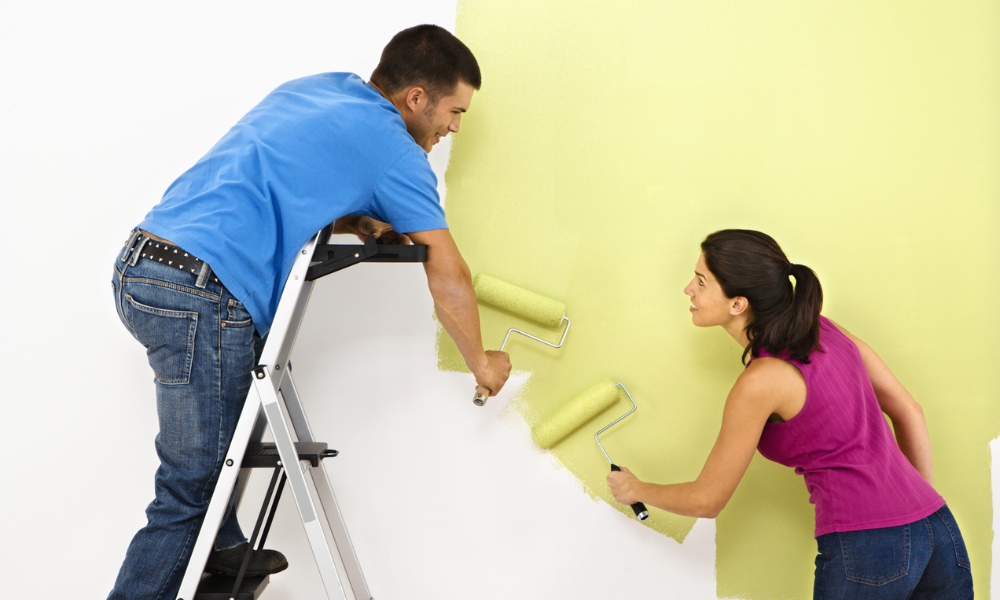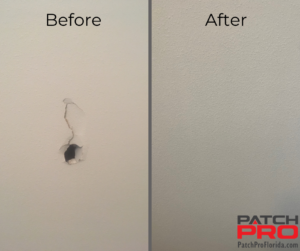Painting your home’s interior completely changes its vibe, boosts resale value, and makes daily life more enjoyable. A fresh coat of paint can brighten dark rooms, highlight architectural details, and reflect your style. The right color palette also sets the mood—cool hues for calm, warm tones for energy. Regular updates prevent wear and fading, keeping your walls looking crisp for years.
Many homeowners debate whether to tackle the job themselves or hire professionals. DIY offers cost savings and creative freedom but demands time, tools, and skill. Pros deliver speed, flawless finishes, and warranties. They handle prep work, cleanup, and hidden issues like cracks or mold. Understanding these factors helps you choose the best route for your budget, timeline, and desired finish.
Pros of DIY Interior Painting
Lower Up-Front Cost
Buying paint and supplies for a 12×12 room typically runs $200–$300. You skip paying professional rates, which average $30–$50 per hour.
Flexible Schedule
Paint evenings or weekends at your own pace. You set the timeline—no contractor scheduling headaches.
Creative Control
You pick every shade, finish, and accent. You experiment with bold or trendy colors without waiting for approval.
Satisfying Achievement
Finishing a room on your own brings pride and new skills. You gain confidence for future home projects.
Learn Valuable Techniques
You’ll master cutting in, rolling, and cleanup. These skills benefit other DIY home improvements.
Cons of DIY Interior Painting
Time-Consuming
Preparing walls, taping, painting, and cleanup can take 3–7 days. Many underestimate the hours required for proper prep.
Variable Quality
Without training, perfect edges and uniform coverage are hard to achieve. Roller streaks or lap marks often appear.
Hidden Costs
Mistakes require extra paint, primer, sandpaper, or even drywall repair products. These expenses can add up quickly.
Safety Concerns
Ladders, fumes, and cleanup pose hazards without proper gear. You must provide ventilation, drop cloths, and masks.
Stress and Disruption
Converting a living space into a work area disrupts daily life. Furniture moves, plastic sheets, and constant cleanup add stress.
Pros of Professional Interior Painting
Expert Prep Work
Professionals clean, sand, and prime walls for better paint adhesion. Proper prep can increase paint longevity by up to 50%.
Fast and Efficient
A skilled crew can repaint several rooms daily, minimizing home disruption and freeing your schedule.
High-Quality Finish
Professional painters deliver sharp lines, uniform coverage, and seamless corners. Their experience reduces the need for future touch-ups.
Warranty & Insurance
Many contractors offer 1–5 year warranties on artistry. They carry liability insurance to cover accidental damage.
Premium Products
Pros often use commercial-grade, low-VOC paints. These formulas offer superior coverage, faster drying, and healthier indoor air.
Cons of Professional Interior Painting
Higher Initial Cost
Expect to pay $2–$6 per square foot. Labor and materials for a 144-square-foot room usually cost $350–$800.
Scheduling Constraints
You must fit into the contractor’s calendar. Rush projects often incur additional fees or longer wait times.
Less Hands-On
If you love DIY, hiring professionals means relinquishing direct control over the process and the final look.
Preparation Requirements
You may need to clear rooms and remove furniture days before the crew arrives. This prep work still falls on you.
Cost Comparison
Picking Paint & Finish
Choosing the right paint and finish makes all the difference.
-
Matte/Eggshell: Hides minor wall flaws. Ideal for living rooms and bedrooms.
-
Satin/Semi-Gloss: Resists moisture. Perfect for kitchens, bathrooms, and trim.
-
Scrubbable Paint: Designed for high-traffic areas. Cleans easily without wearing off.
-
Test Swatches: Paint 2×2-foot sections before committing. View them in morning and evening light.
-
Accent Walls: Use bolder hues sparingly to highlight architectural features.
Why Hiring Professionals Often Wins
DIY saves money upfront, but professionals deliver lasting value. A top-quality paint job can boost resale value by up to 2% and attract more buyers. Before painting, contractors also spot underlying issues—water stains, drywall cracks, or mold. This proactive approach prevents future damage and extends wall life. Many pros also offer warranties, giving homeowners extra peace of mind and protection against peeling or fading. Professional paints often feature low-VOC formulas, improving indoor air quality and health.
Professionals bring the right tools—sprayers, brushes, rollers, ladders, drop cloths—and handle cleanup and safe paint disposal. They prepare every surface meticulously, ensuring better adhesion and durability. Their efficient workflow minimizes mess, reduces disruption, and cuts stress. Most importantly, a flawless finish requires far fewer do-overs than DIY.
Final Recommendations
-
Assess Your Skills: Be realistic about your time and experience.
-
Get Multiple Quotes: Compare at least three professional bids.
-
Check Credentials: Verify licenses, insurance, and customer reviews.
-
Factor Total Cost: Include time, materials, mistakes, and potential repair needs.
Hiring a professional interior painter offers the best combination of speed, quality, and peace of mind for most busy homeowners or first-timers. Click to request your personalized painting quote and see the difference a true pro can make.



You must be logged in to post a comment.